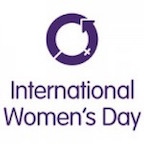Natalia Vega
Tomorrow is International Women’s Day and although progress has been made to help close the wage gap, Canadian women continue to face wage inequality in the work force.
Statistics cited in The Globe and Mail show that the average full-time female employee makes “73.5 cents for every dollar a man makes”.
[poll id=”10″]
In an emailed statement, Status of Women Canada told Humber News that although progress towards closing the gender wage gap has been made, there is room for improvement.
“The issue of the gender wage gap is complex, requiring action at both the federal and provincial/territorial level. We also need to explore how employers can respond to some of the key labour market barriers and opportunities that will help to close the wage gap, including more family friendly workplaces.”
The OECD (Organization for Economic Co-operations and Development) showed that in 2014 Canada had the seventh highest gap out of 34 countries.
On an annual basis, women make substantially less than men.
The wage gap applies to all occupations, yet women in high-powered careers with a post-secondary education are still at a disadvantage.
Chanel Grenaway, Director of Economic Development Programs at Canadian Women’s Foundation said since 2011, not much has changed statistically.
“The wage gap affects all races of women, in all industries, at all levels,” said Grenaway. “Even though women are increasingly qualified for their jobs, regardless of what wages for women are still less than men.”
According to Statistics Canada, the top three jobs listed in 2011 for women aged 25 to 34 with university degrees are kindergarten to secondary school teachers and registered nurses.
“From what I’ve heard in terms of the trends, the income gap is actually greater for women with university and college degrees,” said Grenaway. “Even as you get to the higher levels, the chances of you experiencing the same wage as your male counterpart actually decreases.”
Grenaway said there are discrepancies in the understanding of wage inequality and the question often brought up is ‘does wage inequality really matter?’
“Having women with a lower earning power means they’re at a risk of financial insecurity or falling into poverty,” said Grenaway. “Often times women are the primary caretakers of children, so it’s not just the women’s life that’s at risk, it’s the children.”

